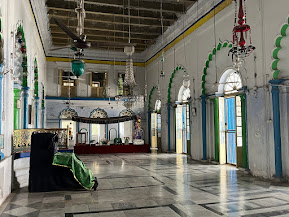It was May of 1856; the dejected Nawab heaved a sigh of sorrow as he stepped down the McLeod. The steamer had just docked at the Bichali Ghat in the southern fringes of erstwhile Calcutta. He had travelled till Varanasi on a palanquin and then boarded the McLeod Steamer, leaving behind his favourite Zurd Kothee Palace, several kilometres away in Lucknow. Nawab Wajid Ali Shah, the King of Awadh, perhaps had an inkling that would never be able to return to his capital!
So began the poor Nawab's life in exile, with a battalion of five hundred men. Fortunately, he had been able to rent out an English styled bungalow on the river front, with impressive manicured lawns, that originally belonged to the Raja of Burdwan.
Unable to return to his capital, the next three decades of his life, the Nawab spent in this part of the city. Homesick, he turned this Metiabruz area into the mini Lucknow or Chhota Lucknow. He started building places like the Qasrul Baiza, Murasa Manzil, Noor Manzil and Adalat Manzil in Metibruz, so that it resembled his hometown. Soon, new mosques and Imambaras were also constructed.
The Nawab was a man of strange interests. Within no time, he had an open air zoo built for his amusement. From lions, tigers and massive reptiles, this zoo became the home to many an exotic bird and rare animal, from all around the world! Several renowned musicians and artists, of those times, also found a new home in the Nawab Metiabruz. Sadly, the Nawab passed away in 1887 and the British demolished most of the pleasure houses he had built. However, till date Metiabruz proudly displays traces left by a Nawab, whose heart could never leave his home in Lucknow!
Did you know?
The origin of the famous Kolkata Biriyani, the only biriyani to have potato in it, can be traced down to this part of the Metiabruz? The Nawab, not having enough money to feed his five hundred men on meat biriyani, had introduced the potato in it, as a substitute!












